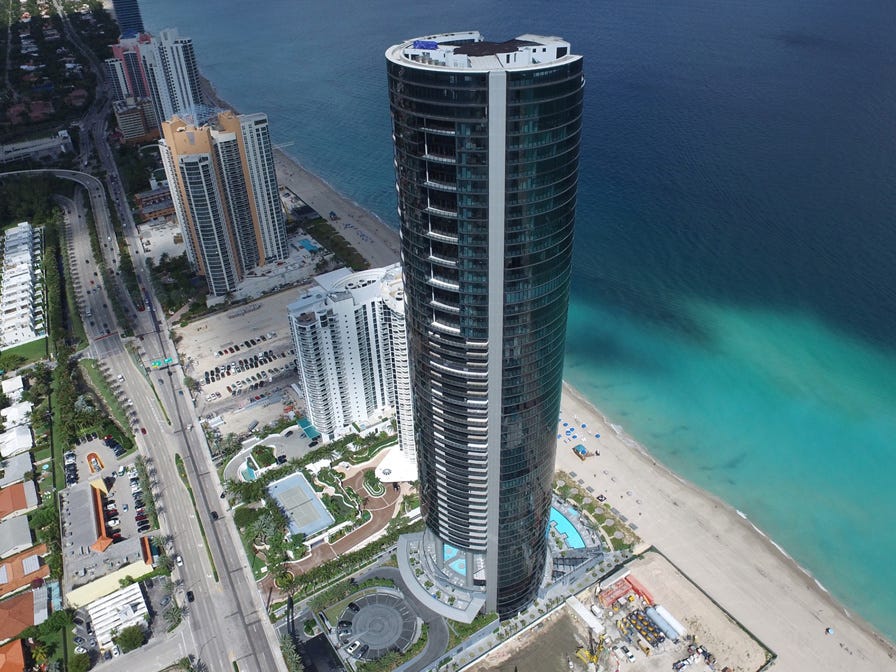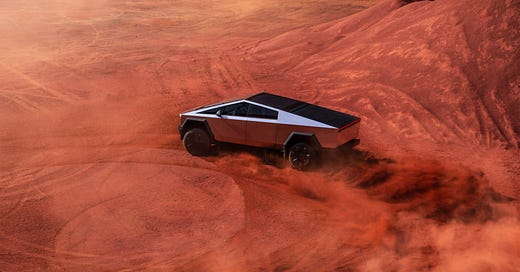Chatbots and Superyachts
A future of thrilling new artefacts has failed to materialise – at least for most of us

Apple is scrapping its ambitions to design a car. My reaction to this news has taken me by surprise: despite my resentment at how the world’s most valuable company has reshaped our lives, I now find myself disappointed that I’ll never see what an “iPhone on wheels” actually looks like. I’m not alone in this of course. Rumours about “Project Titan,” as the mythical vehicle was called, have had design lovers, tech watchers and Apple enthusiasts on tenterhooks for a decade. Its progress (or lack thereof) was veiled in utmost secrecy, but there was speculation about everything from its seatbelts to its alleged lack of a steering wheel or pedals. Investors were along for ride as well; such whisperings would reliably boost the company’s stock price.
Apple has tapped into deep hopes about the promise of technology. I dislike the world created by the smartphone, but I’ve always acknowledged that it was a visionary, epoch-defining object. Its power came not just from what it could do, but from the sense of possibility that it embodied. With designers as skilled as this, it seemed we could scarcely imagine the artefacts waiting for us in the future. What might they do with trains, for instance, or clothes, or furniture, or power tools? Crucially, the iPhone’s imaginative power relied on it being a Fordist product: a piece of technology that, thanks to Apple’s astonishing manufacturing and supply chains, could be made in the hundreds of millions and put into everyone’s hand.
Herein lies the deeper reason for disappointment at the failure of Apple’s car project. It highlights the demise of that future defined by the revolutionary product, the mass-produced object that gives technology a thrilling new shape. Instead, change will continue unfolding in the hallucinatory non-form of software: more algorithms and media, more virtual life, more chatbots, pictures and words. Peter Thiel famously complained that “we wanted flying cars, instead we got 140 characters.” Maybe it’s time for an update: we wanted an Apple car, instead we are heading for a world managed by Siri.
This was already suggested by Apple’s virtual reality headset, which, at $3,500, is a turn away from the mass market and towards a future of digital immersion. Likewise, a transformative car can’t currently be rolled out on the scale of the iPhone, and therefore won’t be transformative. Getting to that stage would require enormous investments in manufacturing technology, which seems unlikely now that demand for electric vehicles is slumping and carmakers are struggling to compete with China’s dramatic entry into the market.
Besides, Apple needed to catch up with a major shift in Silicon Valley over the last year. All the major tech companies have been laying off thousands of workers to focus on pouring money into artificial intelligence. This will doubtless produce stunning breakthroughs in areas like medicine, but in terms of everyday life, it appears the difference will be felt in the thickening textures of the software systems that surround us – in our homes, on our screens, in our interactions with bureaucracy – rather than in the objects we use. The Swedish fintech company Klarna recently claimed its AI chatbot can do the work of 700 full-time customer service staff, having handled 2.3 million calls in its first month. It apparently resolved problems more quickly and effectively.

But it would be wrong to say that innovative products are no longer being imagined and made; it’s just that most of them are exclusively for the very wealthy. The Austrian company Migaloo has designed a new superyacht, which is in fact a 165 metre long submarine. Its owners will be able to land their helicopter on its deck before disappearing beneath the waves for up to four weeks. And while mass-market carmakers are mired in cost-cutting wars, the high-end ones have moved into the luxury real estate market, building branded condominiums in places like Florida and Dubai. A remarkable FT report (thanks to Chris Beiser for sharing) describes the Porsche Design Tower in Miami, where an elaborate elevator whisks residents up to their living quarters without leaving their sports cars: “the doors closed… and we zoomed up 38 floors in glass-sealed cabin, spinning as we went… I was reminded of Disney’s Space Mountain rollercoaster.”
The purpose of this elevator is strangely similar to that of Migaloo’s submarine: it allows its pampered users to enjoy their lives “without ever having to encounter another human being.” Returning to cars, it is interesting to consider Tesla’s new Cybertruck in this context. This is a strikingly original product, impressive in both engineering and aesthetics, and more affordable than most luxury vehicles. But with its bullet-proof glass and harsh metallic body, it too seems less interested in appealing to the world than keeping it out.
By and large, the glamorous material culture of tomorrow, its thrilling new artefacts and spaces, will belong to the super-rich. For the rest of us, technological progress heralds an ever more mediated, unreal existence, as an invisible membrane of algorithmic processes continues to insert itself into the clefts of our relationships, work and culture. A sublime future is materialising, but we will have to settle for a computer-generated image of it.




I have Tesla Cybertrucks driving around my neighborhood. The gulf between the desired aesthetic (e.g., how it's shown in marketing materials) and how it looks in real life is massive. It has some terrible angles that make it look squat and ungainly from certain vantage points, and any dirt or wear immediately looks incongruous on its flat panels. Its geometry is in open rebellion against reality (and maybe beauty), so it's notable in that regard at least.
I think the reference to Fordism is telling. Perhaps Apple realised that trying to develop and refine the private car is the equivalent of Ford's "faster horses". The future of transport, at least urban transport, will not be defined by better, shinier, more efficient, more automated private cars - it will be defined by a combination of mass-mobility and micro-mobility. Instead of looking for innovation in the private car sector, look for it in public transport, e-bikes, cargo bikes etc - this is where we are more likely to see innovative products that will have longevity.